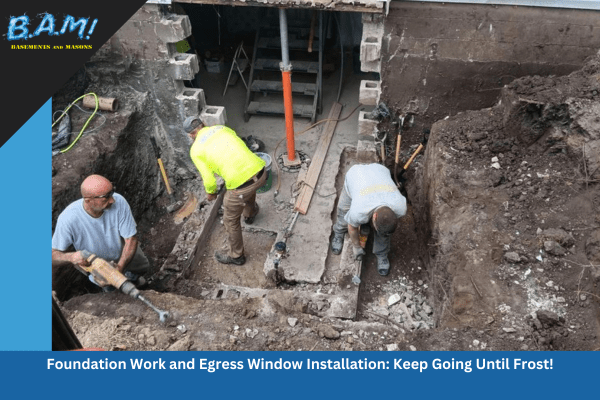The Best Basement Waterproofing Ideas
The Best Basement Waterproofing Ideas
Blog Article
8 Simple Techniques For Best Basement Waterproofing
Table of ContentsWhat Does Best Basement Waterproofing Do?Getting My Best Basement Waterproofing To WorkThe Only Guide to Best Basement WaterproofingNot known Details About Best Basement Waterproofing Best Basement Waterproofing Fundamentals Explained
AdvantaClean's trained specialists and specialists will find the water source. If wall or slab fractures are present, we will inject polyurethane and epoxies into the cracks and seal the compromise, preventing further moisture from entering.
If there's condensation on the outside of the foil, you have high humidity in your cellar. If the foil has condensation on the inside surface area (next to the wall surface), the soil around your house might be naturally damp from a high water table or poor soil drainage.
You can waterproof just your indoor walls, which might address the issue. Or you can waterproof your outside walls, which is a better wager however even more costly. Right here's the scoop on the various types: These thick layers are cement-like. Once they dry, they stick permanently to concrete and masonry walls (Best Basement Waterproofing).
The Best Basement Waterproofing Diaries
Concrete water resistant finishes can't be applied to previously repainted surfaces; examine the tag. Recognized as densifiers, they are appropriate just for walls that have not been repainted or secured.
Yet you clean, roll, or spray it on far more thickly one gallon covers simply 75 square feet, not the 300 square feet common with basic paint. Water-proof paint is fine for DIY application. You can use it over repainted surfaces, and paint over it once it's treated (one gallon prices $37).
It can cost $10,000 to $15,000, depending on the work required. Outside waterproofing involves excavating all around the home to the full deepness of the foundation wall surfaces, then mounting a waterproof coating or membrane layer topped by water drainage panels.
A cellar without waterproofing is kind of like that. Your cellar does not want to go with a rainstorm web without correct protection just as much as you don't desire to.
The Single Strategy To Use For Best Basement Waterproofing
But if you've done your research, you 'd know there are two types of waterproofing: interior and exterior. It can get confusing what they both mean, which one's a better investment, and what will actually maintain the water out. Don't worry, we assembled this blog to easily define both methods for you and discuss the benefits and drawbacks of each.
Exterior waterproofing is a waterproofing method that involves securing your home from the exterior. The structure walls are after that cleaned, sealed, and covered with a waterproof membrane layer or sealant.
The Single Strategy To Use For Best Basement Waterproofing
It's a much more engaged procedure that requires excavating up your yard, which is costly and taxing. Outside waterproofing entails removing whatever bordering the residence, consisting of verandas, driveways, walkways, landscaping, air conditioning systems, decks, and so on. If any of the work was done improperly and water is still entering your cellar, there isn't much you can do to deal with or fix it.
Interior basement waterproofing includes waterproofing from the within. Any kind of water that leakages right into your cellar is rerouted prior to it touches your flooring. It's type of like using a raincoat under your clothing. It includes 2 points: a water drainage track and a sump pump. It works by sealing the inside of your cellar wall surfaces and floorings so water that attempts to go into is channeled out through a sump pump.
It's an effective technique to water-proof your cellar. The disadvantage of interior cellar waterproofing primarily has to do with the installation procedure.
Excitement About Best Basement Waterproofing
In conclusion, outside and interior basement waterproofing are both reliable techniques of protecting your home from water damages. Exterior waterproofing creates an obstacle that avoids water from entering your home, while interior waterproofing reroutes water that does enter your home. And it's essential to keep in mind that outside waterproofing is a costly and turbulent installation process when compared to interior waterproofing.
Whichever click reference method you choose, make certain you choose a reputable and trustworthy professional for the work. Both techniques need skilled employees to deal with the work. If you have any type of questions regarding cellar waterproofing, please reach out to us. And if you're in our solution area and have water in your basement, call us for a totally free, no-obligation home inspection.
You can complete our kind right here, begin a chat in the bottom right-hand edge, or call us at 1-800-827-0702.
Report this page